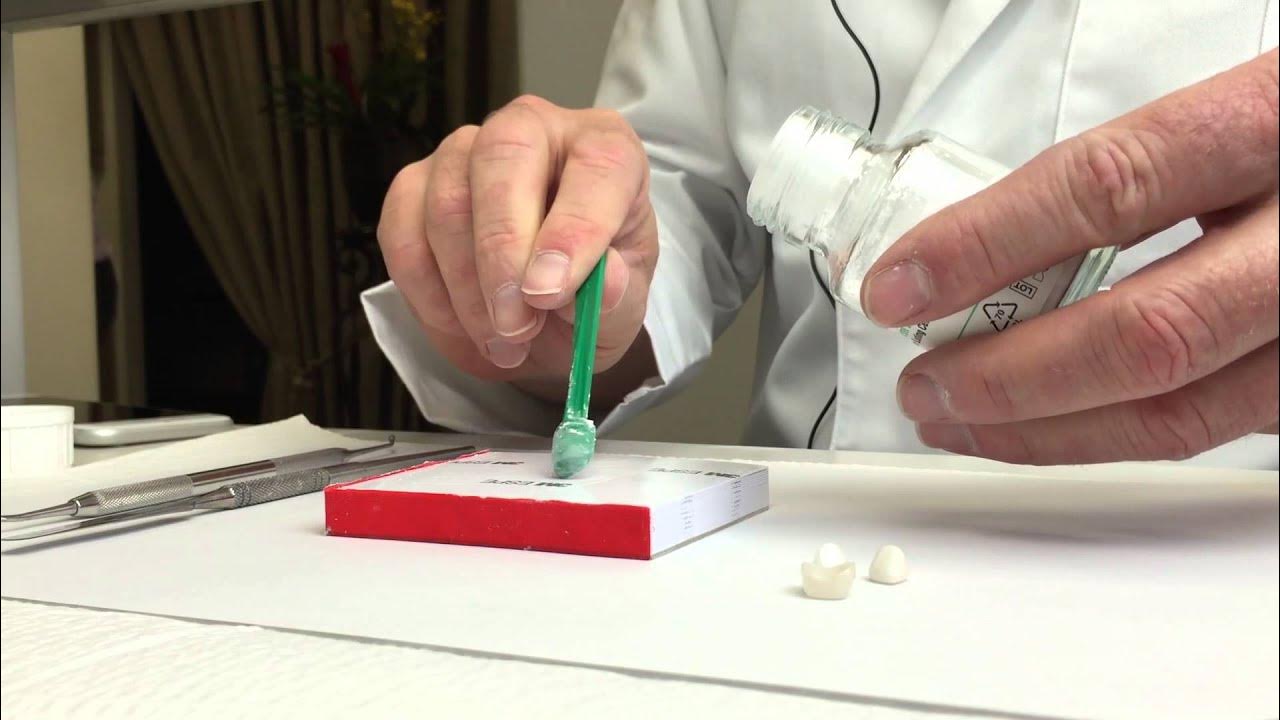Seri Manipulasi Semen Kedokteran Gigi - SIK Bagian 1
Summary
TLDRThis video demonstrates the process of manipulating glass ionomer cement (GIC) for dental restorations. It covers essential steps such as the preparation of materials (powder and liquid), the mixing process, and the application of the cement into a mold. Key techniques like checking the consistency of the mixture, ensuring the correct setting time, and using tools like spatulas, plastic instruments, and a celluloid strip are highlighted. The video emphasizes the importance of precision in mixing and timing to achieve an effective restoration, making it a helpful guide for dental practitioners and students.
Takeaways
- 😀 Dental cements are widely used in dental practice for restoration, both temporary and permanent.
- 😀 Dental cements come in various types and are usually available in powder and liquid form, which need to be mixed to create a homogeneous mixture.
- 😀 The mixing process triggers a chemical reaction where the liquid is acidic (proton donor) and the powder is basic (often ceramic or metal oxide), creating an acid-base reaction.
- 😀 Dental cements can be used for short-term, medium-term, or permanent restorations.
- 😀 Glass ionomer cement is one of the most commonly used dental restoration materials.
- 😀 The main ingredients for mixing glass ionomer cement are powder and liquid, with Vaseline used to facilitate specimen release from molds.
- 😀 Tools required for manipulating the cement include a plastic mold, spatula, glass plate, plastic instrument, celluloid strip, and paper pad.
- 😀 The mold and celluloid strip are coated with Vaseline to ensure easy removal of the material after setting.
- 😀 The ratio of powder to liquid for glass ionomer cement is 1:1, and the components should be mixed for no longer than 40 seconds.
- 😀 Consistency of the mixed cement is checked by lifting it with a plastic instrument; if it forms a ball and doesn't fall, the correct consistency is achieved.
- 😀 The setting time of the cement is tested by lightly touching the surface with a needle; if no impression is left, the cement has set.
- 😀 It is important to track both the working time and setting time during the manipulation of the cement.
Q & A
What is dental cement used for in dental practice?
-Dental cement is commonly used in dental practice for restorative purposes, including both temporary and permanent restorations. It is used as a base material for restorations and as a luting agent.
What are the common forms of dental cement?
-Dental cements are typically available in powder and liquid forms, which need to be mixed to form a homogeneous cement mixture.
How does the chemical reaction work in dental cements?
-The chemical reaction in dental cements typically involves an acid-base reaction. The liquid is usually acidic and donates protons, while the powder is basic and often contains ceramic or metal oxide components.
What is one of the most commonly used dental cements for restorations?
-One of the most commonly used dental cements for restorations is glass ionomer cement.
What materials are required to manipulate glass ionomer cement?
-To manipulate glass ionomer cement, you need powder and liquid of the cement, Vaseline to aid in specimen release, and several tools such as a plastic mold, spatula, glass slab, plastic instrument, celluloid strip, and paper pad.
Why is Vaseline used during the manipulation of glass ionomer cement?
-Vaseline is used to help release the specimen from the mold, ensuring the material does not stick to the mold or the celluloid strip.
What is the correct ratio for mixing the powder and liquid of glass ionomer cement?
-The correct ratio for mixing glass ionomer cement is 1:1, meaning one part powder to one part liquid.
What is the procedure for mixing the powder and liquid?
-To mix the powder and liquid, first divide the powder into two parts. Mix the first part in a small area, then add the second part and continue mixing until a homogeneous mixture is achieved. The total mixing time should not exceed 40 seconds.
How do you check the consistency of the glass ionomer cement mixture?
-The consistency of the cement mixture is checked by lifting the mixture with a plastic instrument. If it does not fall and can form a ball, the cement has reached the correct consistency.
How is the setting time of glass ionomer cement tested?
-The setting time is tested by gently inserting a needle into the surface of the remaining cement on the spatula. If the needle does not leave a mark, the cement has hardened.
Outlines

Cette section est réservée aux utilisateurs payants. Améliorez votre compte pour accéder à cette section.
Améliorer maintenantMindmap

Cette section est réservée aux utilisateurs payants. Améliorez votre compte pour accéder à cette section.
Améliorer maintenantKeywords

Cette section est réservée aux utilisateurs payants. Améliorez votre compte pour accéder à cette section.
Améliorer maintenantHighlights

Cette section est réservée aux utilisateurs payants. Améliorez votre compte pour accéder à cette section.
Améliorer maintenantTranscripts

Cette section est réservée aux utilisateurs payants. Améliorez votre compte pour accéder à cette section.
Améliorer maintenant5.0 / 5 (0 votes)






